| SRGMS Newsletter | April 2008 |
|
Wilson Grove & Petaluma Formations, -Petaluma, CA 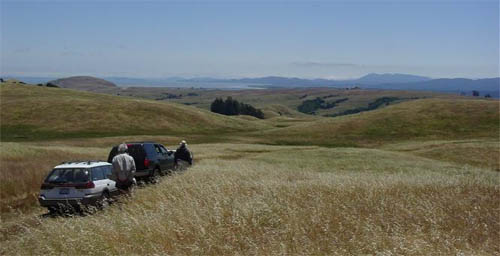 Geologic History with ages in million years (my) Intro by Terry Wright 1998 Our landscape is created by opposing forces: constant uplift from pressure caused by the grinding of tectonic plates along the San Andreas fault: and continuous erosion by rivers, landslides and humans. West of the San Andreas fault, the Sur series formed as ancient sedimentary layers which were changed by heat and pressure (250 my). Molten rock then cooled deep below to form speckeled Diorite and white bands of coarse granite seen at Bodega Head (100 my) . The San Andreas Fault moved the Sur series and underlying Diorite at least 320 miles north relative to the mainland during the last 29 million years. After uplift and erosion of 5 miles of overlying rocks, sand and gravel accumulated on a beach and became Marine Terrace deposits (40,000 years). These ancient beaches are being uplifted and eroded today along the coast. Look for Native American white shell middens in dark organic soil above the sands at Bodega Head. Alluvium is sand and gravel forming today in river valleys and on beaches. East of the San Andreas Fault, the Franciscan Complex is a faulted mixture of ocean crust rocks (140-42 my). Its contents formed on the ocean floor, some many thousands of miles southwest from here. They mixed along faults and stuck to the continental edge as the ocean floor slid down under western North America, visible at Shell Beach on the coast. After 30 my of uplift and erosion, the Petaluma Formation formed from sedimentation in a shallow sea (10my). After more uplift, tilting and erosion, the Sonoma Volcanics resulted from erupting lava and ash (3-8 my). The Wilson Grove Formation of sands and fossil shells formed in a shallow sea to the west of the volcanos (3-5 my). With yet more uplift and erosion, the Russian River cut its path across rising mountains to the sea. Glen Ellen gravel, sand and clay formed in local valleys (1my). Alluvium is the eroded sand and gravel that washes into the river valleys and up onto the beaches of Sonoma County , part of the ongoing dynamics of geologic change.
The Wilson Grove Formation is exposed from Petaluma north to northern Santa Rosa, and from Bennett Valley west to Bodega Bay. A fauna of at least 107 invertebrate taxa consisting of two brachiopods, 95 mollusks (48 bivalves and 46 gastropods), at least eight arthropods, and at least two echinoids have been collected, ranging in age from late Miocene to late Pliocene. Rocks and fossils from the southwest part of the outcrop area, along the Estero de San Antonio, were deposited in a deep-water marine environment. At Meacham Hill, near the Stony Point Rock Quarry, and along the northern margin of the outcrop area at River Road and Wilson Grove, the Wilson Grove Formation was deposited in shallow marine to continental environments. At Meacham Hill, these shallow water deposits represent a brackish bay to continental environment, whereas at River Road and Wilson Grove, fossils suggest normal, euhaline (normal marine salinity) conditions. A few taxa from the River Road area suggest water temperatures slightly warmer than along the adjacent coast today because their modern ranges do not extend as far north in latitude as River Road. In addition, fossil collections from along River Road contain the bivalve mollusks Macoma addicotti (Nikas) and Nuttallia jamesii Roth and Naidu, both of which are restricted to the late Pliocene. The late Miocene Roblar tuff of Sarna-Wojcicki (1992) also crops out northeast of the River Road area and underlies the late Pliocene section at Wilson Grove by almost 300 m. Outcrops in the central part of the region are older than those to the northeast, and presumably younger than deposits to the southwest. The Roblar tuff of Sarna-Wojcicki (1992) occurs at Steinbeck Ranch in the central portion of the outcrop area. At Spring Hill, also in the central part of the outcrop area, the sanddollar Scutellaster sp., cf. S. oregonensis (Clark) has been recently collected. This species, questionably identified here, is restricted to the late Miocene from central California through Oregon. Outcrops at Salmon Creek, northeast of Steinbeck Ranch and also in the central part of the outcrop area, contain Aulacofusus? recurva (Gabb) and Turcica brevis Stewart, which are both restricted to the Pliocene, as well as Lirabuccinum portolaensis (Arnold) known from the early Pliocene of central and northern California and into t he late Pliocene in southern California. These data suggest an overall pattern of older rocks and deeper water to the south and west, and younger rocks and shallower water to the east and north. Outcrops to the southwest, south of the Bloomfield fault, are not well dated but presumably are older than the late Miocene Roblar tuff of Sarna-Wojcicki (1992). Fossils in this part of the section are rare and are not useful in determining a precise age or environment of deposition for the lower part of the Wilson Grove Formation. However, sedimentary sequences and structures in the rocks here are useful and suggest probable outer shelf and slope water depths. Lituyapecten turneri (Arnold) which occurs in this part of the section has previously been restricted to the Pliocene, but its occurrence below the Roblar tuff of Sarna-Wojcicki (1992) indicates a revised late Miocene age for this taxon. Three possibly new gastropods (Mollusca) are reported here: Calyptraea (Trochita) n. sp. and Nucella sp., aff. N. lamellosa (Gmelin), both from the Bloomfield Quarry area, and Acanthinucella? n. sp. from the River Road area. These species are not described here because this venue is deemed insufficient for the description of new taxa. For all your MAP freaks out there, this is a GREAT PDF of "Geologic Map of Petaluma"
The location of this is on private land. I have been in touch with gentleman who wrote the above article and he will be hosting another field trip in June to this location. We have been invited to join them (details to follow). So consider this article a teaser as for whats to come!
|
|
||||||||||||||
|
In The News... Rare Purple Diamonds Discovered Allheadlinenews.com Posted: March 5, 2008
"Natural fancy colored diamonds are very rare and expensive. Purple is one of the rarest and most desirable colors. This makes the Quebec diamond discovery both unique and amongst the oldest diamond bearing occurrence in the world," says Dianor Resources, Inc., one of the JV partners, in a statement. The largest diamond was a colorless fragment measuring 1.06mm by 0.98 mm by 0.56 mm. All of the purple diamond samples have been associated with samples having high diamond counts, 39 to 224 diamonds per sample. The diamonds were recovered from 18 surface rock samples of conglomerates between 2.7 and 2.7 billion years old.
The joint venture, composed of Dianor, Metalex Ventures Ltd., and Wemindiji Exploration Inc., mapped out eight different geographic areas of Quebec in late 2006 until last month.
The companies said the new diamond discovery is the largest to date in Quebec as the diamond-bearing Ekomiak Conglomerate extends for four kilometers and up to 500
meters in width with individual outcrops measuring 500 meters by 400 meters in size.
More News.. Google Earth Leads Geologist To Meteor Crater Webpronews.com Posted: March 18, 2008 Dr. Hickman, from the Geological Survey of Western Australia sent the Google Earth picture to a colleague who was able to confirm that it was an undiscovered meteorite crater. The crater is now named Hickman crater. The crater is believed to be between 10,000 and 100,000 years old and is 885 feet across. Frank Taylor writes on the Google Earth Blog," If you want to start searching for craters in Google Earth, you might want to load this super-collection showing placemarks of known and suspected meteor craters on Earth." "There are several folders which show various datasets of craters and some show the size of the craters as well. Also, be aware that not all things that look like meteor craters are. Besides the obvious volcano craters, there are other geological objects which appear as meteor craters but are not."
Dr. Hickman said anyone can use Google Earth to find craters created by meteorites. "Large meteorites hit every few thousand years, so when you consider that
the landscape is millions of years old, there's a lot of potential for meteorite craters out there," he told ScienceAlert.
April Birthstone - Diamond April's birthstone is remarkably simple in composition, yet stunning in its unique ability to reflect and refract light into vivid flashes of brilliant color. The name "diamond" comes from the Greek word "adamas"meaning unconquerable-suggesting the eternity of love.In fact, diamonds have been the traditional symbol of love since ancient Greece. Discovered about 2,500 years ago in India, the ancient Hindus called the Diamond "Vajra," meaning lightening, both because of the sparks of light thrown off by this gem as well as its invincible strength. The ancients believed they were splinters from the stars, perhaps crystallized lightening or hardened dew drops. The Diamond is harder than any other substance on earth. Diamonds have been revered throughout history. Used to embellish such items as crowns, swords and emblems as well as jewelry, they've even been part of national holidays. Queen Victoria declared the celebration of her 50th year of reign a "Diamond Jubilee." Diamonds have also been credited for having certain medicinal properties. During the middle ages, these gemstones were thought to heal illness, but only if the ailing person took the Diamond into bed to warm it up first! Formed deep within the earth where there is intense heat and pressure, Diamonds are simply crystallized carbon. Volcanic activity of centuries ago brought these gemstones to the earth's surface, where they are found either within volcanic rock formations or washed out into rivers. India is thought to be the first river-bed source of Diamond mining, but today these gemstones are found primarily in Australia, the Soviet Union, and Africa. No more notable it its uncut state than a plain pebble upon the beach, the true beauty of the Diamond was not revealed until the 16th century, when gemstone cutting and polishing techniques were perfected. Prior to this time, it was considered taboo to modify the original state of a Diamond. Today, the value and appeal of this stone depends largely upon how skillfully it is cut and faceted. Besides being the most popular gemstone for engagement rings, diamond is the accepted anniversary gem for the 10th and 60th years of marriage. Although diamonds are associated with being a colorless stone, they are occasionally found with a strong, bright color-green, red, pink, blue, canary yellow and amber. These "fancy" colored diamonds are highly-prized. Occasionally, to improve appearance, diamonds are laser-drilled and, sometimes, a foreign substance is used to fill surface cavities or fractures. Diamonds may also be irradiated and/or heated to induce "fancy" colors. |
| SRGMS Newsletter | Continued |
|
Fees are based upon $10/hr instruction. 30% of all class fees are turned over to SRMGS.
Basic Wire -3 1/2 hours
World of Quartz -1.5 hours
Lecture by Nicole Myers of SSU Wednesdays 4/23/08, 7:00 to 8:30 pm Prerequisite: None Fee $10. Max. Students: no limit Quartz is one of the most abundant minerals in Earth. Why do the different types of quartz look so different? What are the Earth processes that create such incredible varieties? How can we identify quartz in gemstones and rocks? I will be answering these questions, and many more.
Egyptian Chain- 4 hours
Next trip
Crystal Huntin at the Geysers
*CAUTION: Be on the look out for POISON OAK.
There will be some hiking, please be prepared. Difficulty level:
|


 We love to have more active members. Attend one or more of the SRMGS Meetings to get the most out of your membership! Meetings are held at the SRMGS Workshop.
We love to have more active members. Attend one or more of the SRMGS Meetings to get the most out of your membership! Meetings are held at the SRMGS Workshop.

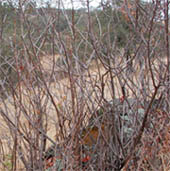 Dormant in the winter
Dormant in the winter
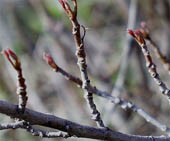 First Signs of Spring
First Signs of Spring
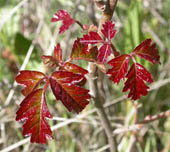 New leaves
New leaves
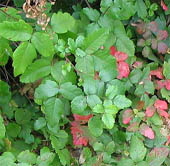 Spring Time Green
Spring Time Green
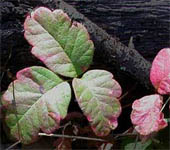 Summer colors
Summer colors
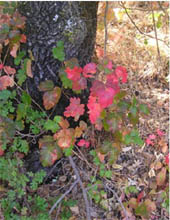 Summer Glory
Summer Glory
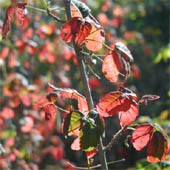 Early Fall
Early Fall
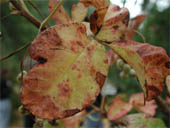 Late Fall
Late Fall
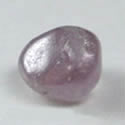 Montreal, Canada (AHN)- A joint venture mining project has discovered nine rare purple diamonds from a batch of 649 diamonds harvested
at the Ekomiak V property in James Bay, Quebec.
Montreal, Canada (AHN)- A joint venture mining project has discovered nine rare purple diamonds from a batch of 649 diamonds harvested
at the Ekomiak V property in James Bay, Quebec.
